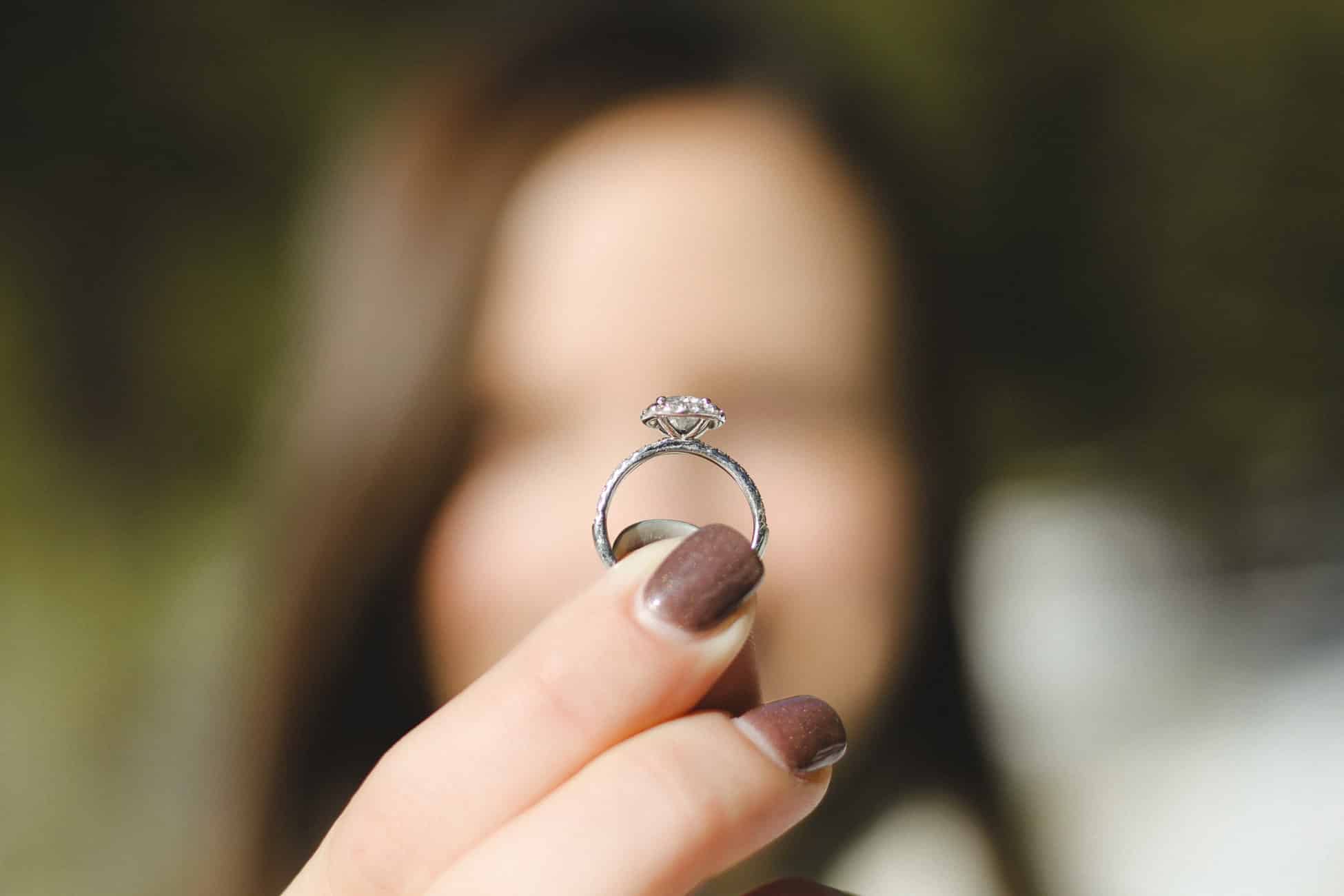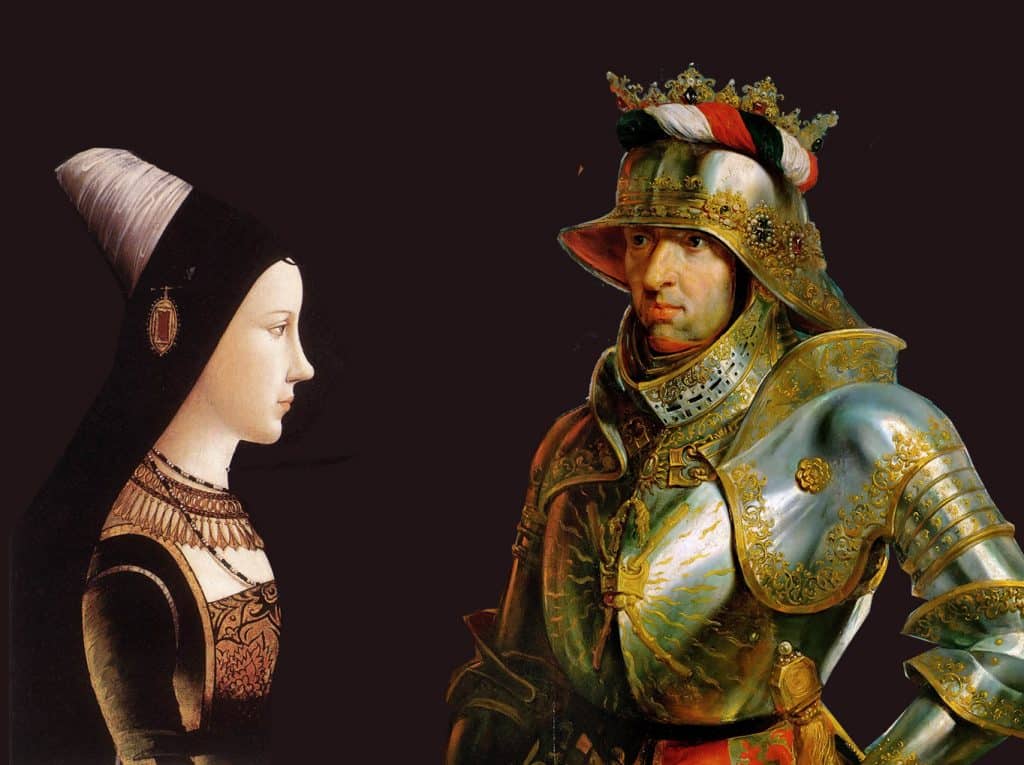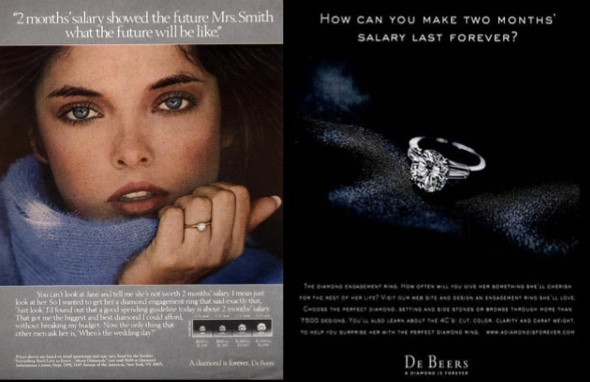Blog
Home » Diamonds blog » THE MOST ENGAGING OF CEREMONIES
Focus on

It is said that the first diamond engagement ring was given by Archduke Maximilian, a member of the Austrian royal family, when he proposed to Mary of Burgundy in 1477. It was set with thin, flat diamonds in the shape of an “M.”
But the association with rings and matrimony actually goes way back earlier. In ancient Egypt, where it was believed that circles were symbols of eternity, couples exchanged rings made out of braided reeds. By the 2nd century of the common era, Romans are were giving betrothal rings instead of larger dowries. However, that had less to do with eternal love than with the legal niceties of the marriage contract. Pliny the Elder wrote that a groom first gave his bride a gold ring to wear at the betrothal ceremony, and then an iron ring to wear at home. The ring, it appears, was a symbol of the legal agreement that provided him ownership over her.
The ring also is a symbol of marriage in the Jewish tradition, but here too its significance is more legal than emotional, symbolizing the act of betrothal, as one would sign a contract.

Trendsetters Archduke Maximilian and Mary of Burgundy, about whom legend says in 1447 were the first couple to seal a pending marriage with a diamond engagement ring.
DE BEERS’ TRANSFORMATIVE MOVE
The example set by Maximillian and Mary, celebrities in their day, sparked a tradition among the European nobility of giving rings as part of the engagement ceremony, although precious gems were not always part of equation. Posey rings, which were engraved with romantic poems and sayings, were popular at the time.
It was the De Beers company that saw the engagement ceremony as a sales opportunity, reasoning that, if one could create a diamond-giving tradition at that critical moment in young peoples’ lives, the business potential was almost unmeasurable.
It the 1930s, during the Great Depression that he mining company made a move that, undoubtedly, would change the jewelry industry’s arc. Launching its “A Diamond Is Forever” campaign, it introduced the suggestion that a diamond, like the love between a betrothed couple, should last until the end of time. And, if it doesn’t? Then each would have to buy another diamond, next time round.
To say the campaign was successful would be understating the fact. Whereas only 10 of percent of brides got married wearing an engagement ring in the 1930, in the United States today the figure exceeds 80 percent. It is as much part of the classic engagement ceremony as the white bridal dress is part of the wedding.

And yet another royal engagement! Meghan Markle, the prospective Duchess of Sussex, sports her diamond ring following the announcement that she and Britain’s Prince Harry would be marrying.
CHANGING NORMS IN A CHANGING SOCIETY
But that is not the only things that is a changing. In some modern societies, where marriage is not necessarily between a man and woman, both partners may be wearing diamond engagement rings.
Today, as well, despite the popular legend of the man surprising the woman when he decides to propose, fully one in three women play an active part in choosing their own rings, according to a survey conducted by Hitched, a marriage website. The same poll showed the engagement ring to be the fourth largest matrimonial expense, after the wedding venue, the honeymoon and the cost of catering the event.
And how much should one spend on a wedding ring? It’s tough to put a price on eternal love.
When it first launched its “A Diamond Is Forever” campaign in the 1930s, De Beers had a suggestion. One-month’s salary would seem a fair amount to spend.
By the 1980s that was no longer considered sufficient, by De Beers at the very least, and the relative measurement for the cost of the ring was doubled. A popular ad at the time showed a woman wearing a scarf looking straight at the camera. The tagline beneath her read “Two months’ salary showed the future Mrs. Smith what the future would be like.”
Fast forward to the new millennium and the cost of engagement formula was upped by an additional month. Three months’ worth of earnings is now considered the appropriate amount.
But do people stick to the formula? In 2017, according to the annual marriage survey conducted by The Knot magazine, it was estimated the average cost of an engagement ring in the United States was $6,351. That same year, the U.S. Bureau of Labor Statistics reported that the mean wage for 25 to 34-year-olds, who include people in the prime marrying category, was $41,236, or $3,436 per month. It would appear, therefore, that the three-month suggestion has not yet caught on.
But people still get married wearing diamonds, and generally pricier ones at that. The engagement ceremony remains the most reliable anchor of the diamond market. Love may not be forever, but the diamond engagement ring certainly seems to be.

De Beers’ iconic ‘future Mrs. Smith’ ad, presenting the premise of the two-salary outlay for a diamond engagemnt ring.
